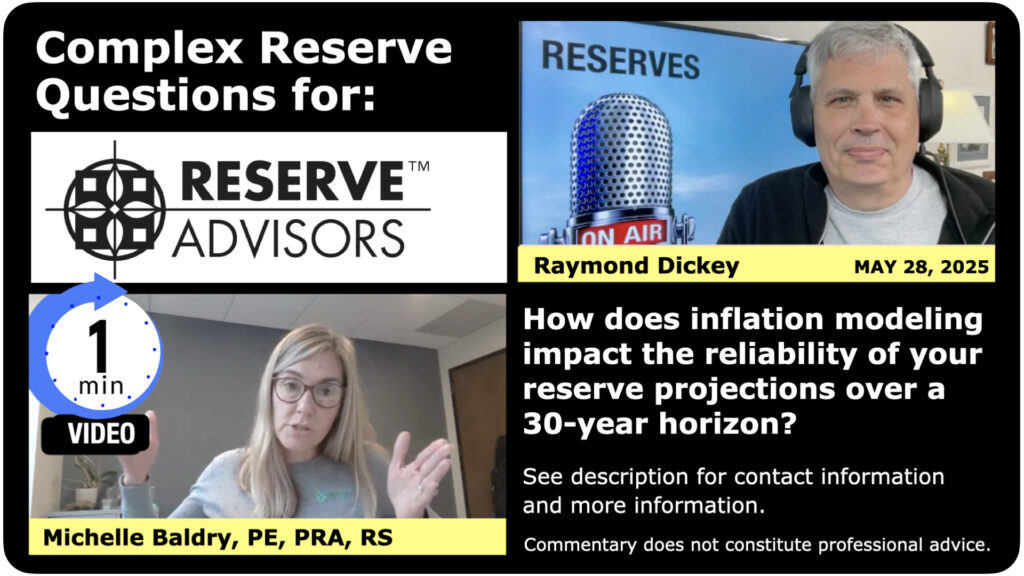
Reserves – Inflation Modeling
When it comes to long-term planning, community associations rely heavily on reserve studies to anticipate major repair and replacement costs over time. But a key factor that can shake even the most carefully laid plans? Inflation.
Inflation modeling plays a critical role in the reliability of reserve projections—especially over a 30-year horizon. While reserve studies aim to provide a clear roadmap for funding large capital projects like roofs, roads, and mechanical systems, inflation adds an unavoidable layer of uncertainty.
Industry standards typically account for inflation by incorporating a normalized rate—often around 3%—into the reserve forecast. This allows for a consistent and manageable projection across decades. But when the real-world economy deviates significantly from that assumption—whether through periods of rapid inflation or unexpected deflation—the study can quickly become outdated.
That’s why the Community Associations Institute (CAI) recommends updating your reserve study at least every three years. Not only do construction costs evolve, but factors like weather events, supply chain shifts, and geopolitical developments can all influence material and labor costs in ways no static model can predict.
In short, while your reserve study may look 30 years into the future, it should never go untouched for even five. Updating it regularly ensures your funding plan reflects current economic realities, not just theoretical trends. Inflation modeling isn’t just a spreadsheet calculation—it’s a vital checkpoint for financial resilience.
Panelists
Michelle Baldry, PE, PRA, RS
Reserve Advisors, Inc.
mbaldry@reserveadvisors.com
www.reserveadvisors.com
Raymond Dickey • AssociationHelpNow
YouTube: HERE
Facebook: HERE
LinkedIn: HERE
GoToWebinar: HERE
Go to AssociationHelpNow.com for videos, books, articles, and more!
Disclaimer: This content was provided for informational purposes only and does not constitute professional advice. It has been generated using the GoToWebinar system and assisted by artificial intelligence; therefore, accuracy is not guaranteed. This summary is offered as a courtesy to highlight the significance of the discussed topic and encourage viewers to revisit the recorded livestream for full context. The panelist may or may not have reviewed the information. Always consult qualified professionals before making any decisions or taking action based on this content.






